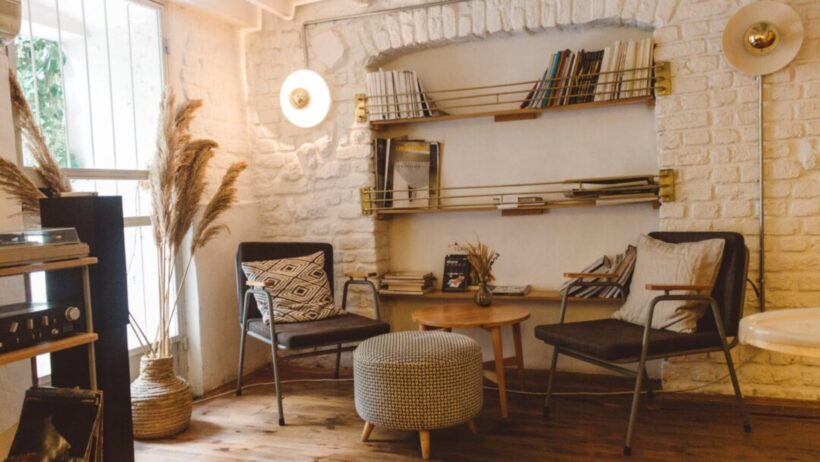Wood furniture, with its rich textures and timeless appeal, deserves special attention, especially when it comes to preservation. Storing wooden items sans climate control may appear daunting, but a strategic approach not only safeguards their integrity but also extends their lifespan. This exploration offers an array of methodologies for maintaining wood furniture under challenging conditions.
First and foremost, understanding the inherent properties of wood is essential. Wood is a hygroscopic material, meaning it can absorb and release moisture depending on the surrounding environment. Consequently, fluctuations in humidity and temperature can lead to significant damage over time. Cracking, warping, and splitting are not merely cosmetic issues; they compromise the structural stability of the furniture.
Begin with the selection of an appropriate location for storage. Choose a space that is dry, well-ventilated, and away from direct sunlight. Sun exposure can cause discoloration while excessive moisture can promote mold growth. A basement or attic may seem appealing due to their ample space, yet they often experience extreme temperature variations, making them less than ideal.
Once the site is selected, the next step involves preparation. Before storing any furniture, ensure it is clean and free from dust and grime. A gentle wipe with a soft, damp cloth is often sufficient. For pieces with intricate carvings or grooves, a soft-bristle brush can help eliminate dirt in hard-to-reach areas. Take care to avoid any harsh chemicals or abrasive materials that might mar the finish.
To further guard against moisture, consider using desiccants. Silica gel packets or activated charcoal can effectively absorb excess humidity within the storage environment. Placing these desiccants strategically around the furniture not only mitigates moisture levels but also helps in maintaining a more stable microclimate for your treasured items.
Furthermore, the arrangement of furniture plays a pivotal role. Avoid stacking items directly on top of each other; this can lead to pressure points that exacerbate warping or cracking. Instead, utilize pallets or platforms to elevate pieces off the ground, enhancing air circulation beneath them. When deciding on furniture placement, ensure that there’s ample space between each item to promote air flow, preventing any moisture tethering.
Utilizing covers can be a double-edged sword. While they provide a protective barrier against dust, choosing the right type is crucial. Opt for breathable cloth rather than plastic. Plastic covers can trap moisture, creating a conducive environment for mold and mildew. Conversely, breathable fabrics allow for air circulation while safeguarding against dust accumulation.
When storing furniture with upholstery, specific considerations are required. Fabric fibers can also absorb moisture and harbor dust mites. Regularly checking and maintaining the upholstery — such as vacuuming with an appropriate attachment — ensures that while the wood is protected, the coverings remain fresh and unblemished.
Moreover, take into account the joints and hinges of wooden furniture. These components can be particularly susceptible to environmental conditions. Lubrication with a suitable wood oil can help preserve functionality and prevent rust in metal parts. Regular inspections during the storage period are advisable to ensure they remain in good working order.
Another vital aspect of storing wood furniture is the impact of pests. Wood-destroying insects, like termites or woodboring beetles, are notorious for compromising the structural integrity of furniture. Utilizing insect repellents or incorporating natural deterrents, such as cedar chips, can provide an additional layer of security against infestations. Regular inspections are paramount to identifying any potential invasions early.
The potential for climate change raises further concerns regarding storage conditions. As extreme weather events become more frequent, the risk of flooding or unchecked humidity levels increases. Investing in a hygrometer to monitor humidity levels in your storage space can be invaluable. Aim to maintain humidity levels between 30% to 50% to protect wooden goods from excess moisture.
It’s also prudent to consider the time frame for storage. For shorter periods, less stringent measures may suffice. However, for long-term storage, a comprehensive plan is paramount. Establish a timeline for regular checks to assess the condition of your furniture, allowing for proactive measures should any concerns arise.
Creating an inventory of the stored items can simplify inspections. Record specific details such as date of storage, condition prior to storage, and any unique features that may require special attention. This documentation can be invaluable should any issues arise or if retrieval needs to be timed precisely, ensuring that everything is easily accounted for upon reintroduction to the living space.
Ultimately, storing wood furniture without climate control demands a thoughtful, proactive strategy. By explicitly understanding the nuances of wood and actively implementing protective measures, individuals can preserve their beloved furnishings, even under less-than-ideal conditions. Embracing this new perspective on furniture storage not only fosters a greater appreciation for craftsmanship but also reinforces a commitment to maintaining the legacy of wood for generations to come.
Through attentive care and modifications to storage practices, we can counteract the challenges imposed by fluctuating environmental conditions, ensuring that wood furniture remains a lasting element of our lives. Embrace this opportunity to rethink storage and champion sustainable practices that honor the natural materials that enrich our surroundings.








